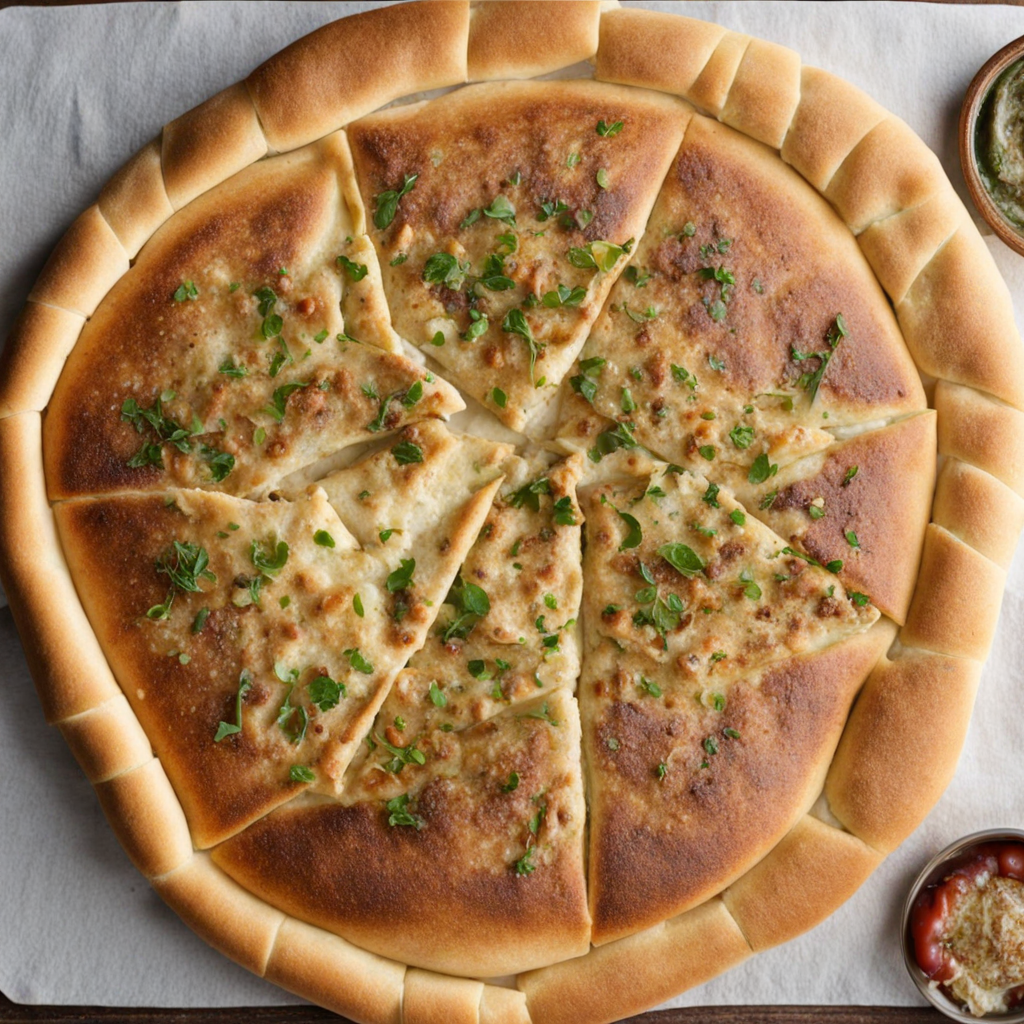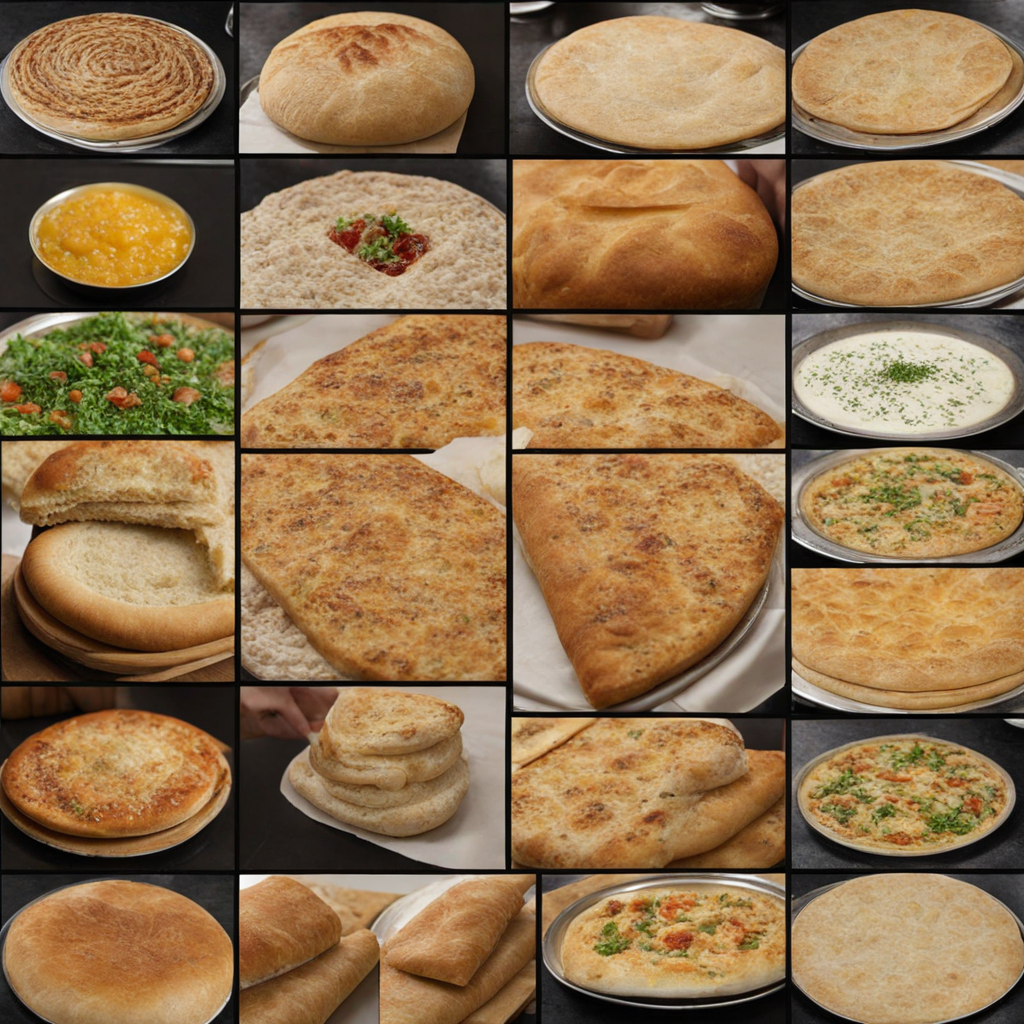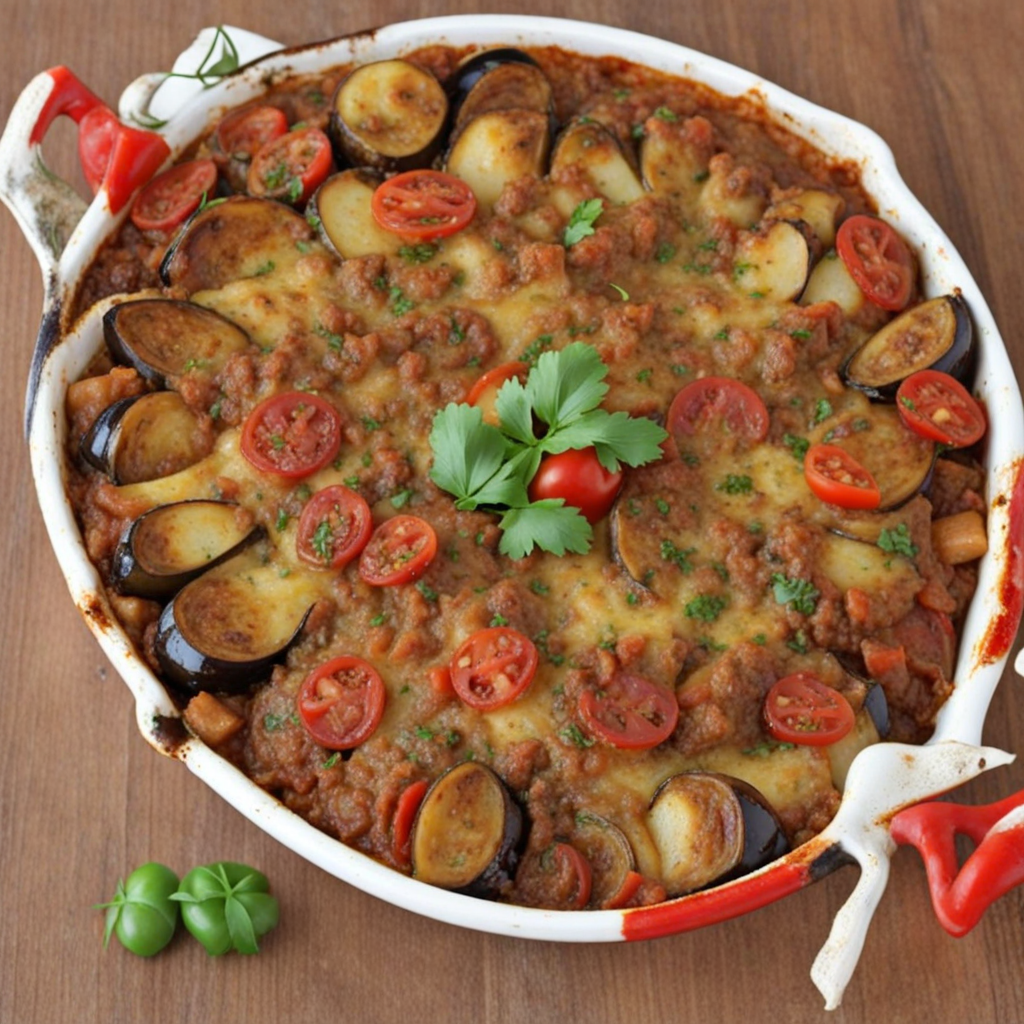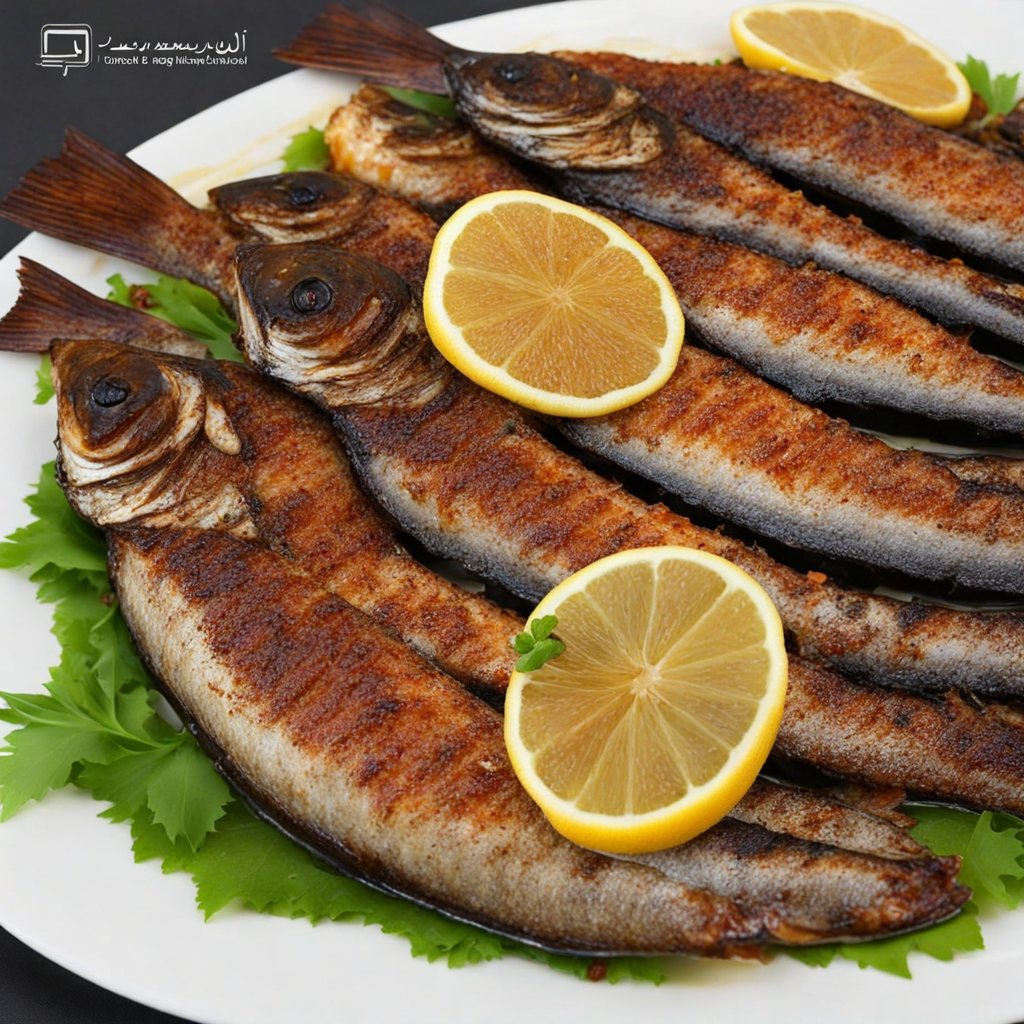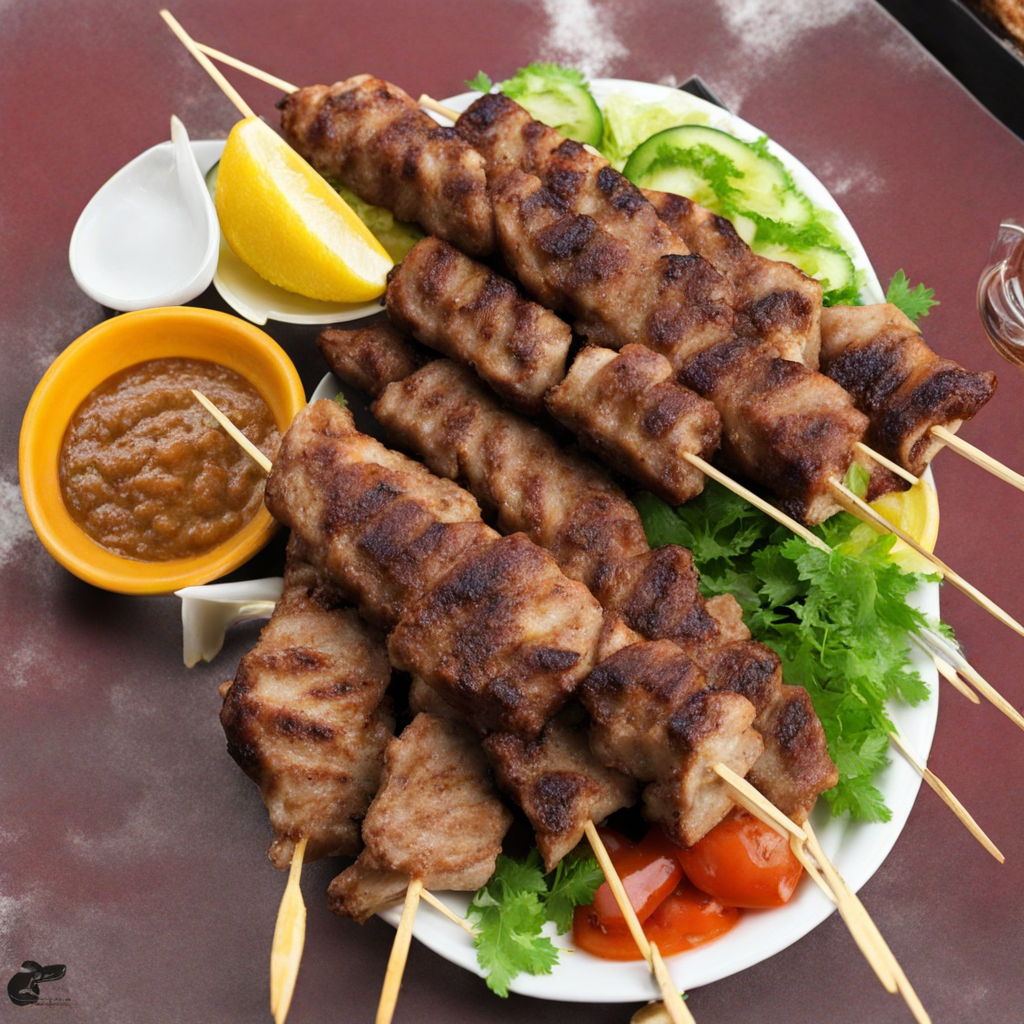Ga'at
قاعة, also known as 'Qaa'a', is a traditional Iraqi dish that holds a significant place in the culinary landscape of Iraq. This dish is often associated with communal gatherings and celebrations, making it a staple at weddings, festivals, and family reunions. The origins of Qaa'a can be traced back to ancient Mesopotamian culture, where the practice of cooking and sharing food was deeply rooted in social customs. Over the centuries, it has evolved while maintaining its core characteristics, reflecting the rich history and diverse influences that have shaped Iraqi cuisine. The primary flavor profile of Qaa'a is a harmonious blend of spices and ingredients that create a comforting and hearty dish. The dish is typically characterized by a savory taste with a hint of warmth from spices such as cumin, coriander, and black pepper. The use of garlic and onion adds depth to the flavor, while a touch of lemon juice brings a refreshing brightness to the overall profile. The dish is usually enjoyed warm, and it often features a tantalizing aroma that wafts through the air, enticing all who gather around the table. Preparation of Qaa'a involves a series of steps that are steeped in tradition. The base of the dish is usually made from rice, which is cooked to fluffy perfection, often flavored with saffron or turmeric to give it a distinctive color and fragrance. The protein component typically consists of tender meats such as lamb, beef, or chicken, which are marinated with a mixture of spices and then slowly cooked
How It Became This Dish
Origin of قاعة (Qā‘ah) The dish known as قاعة (Qā‘ah) has deep roots in Iraqi cuisine, emerging from the rich culinary traditions of the region. Its origins can be traced back to the ancient civilizations that thrived in Mesopotamia, where the fertile lands between the Tigris and Euphrates rivers allowed for bountiful agriculture. Early inhabitants cultivated grains, legumes, and vegetables, which formed the foundation of their diet. Qā‘ah is thought to have evolved from these basic ingredients, incorporating local spices and methods of preparation that have been passed down through generations. The name "قاعة" itself is derived from the Arabic word for "hall" or "gathering," which reflects the dish's role as a communal meal often served during large family gatherings or celebrations. Traditionally, Qā‘ah is prepared in a large pot or dish, making it ideal for sharing. This sense of community and togetherness is central to its significance in Iraqi culture, as food often serves as a medium for social interaction and bonding among families and friends. \n\n Cultural Significance In Iraq, food is not merely sustenance; it is a vital component of cultural identity and social customs. Qā‘ah embodies these values, often being featured during significant events such as weddings, religious holidays, and communal feasts. The preparation of this dish can be a communal activity, with family members coming together to contribute ingredients, cook, and share in the enjoyment of the meal. This collective involvement fosters a sense of unity and strengthens family ties, making Qā‘ah more than just food—it's a celebration of culture and heritage. Moreover, Qā‘ah is often accompanied by traditional Iraqi side dishes, such as salads, pickles, and various breads. The diversity of flavors and textures enhances the overall dining experience, allowing diners to appreciate the complexity of Iraqi cuisine. The dish also showcases the importance of hospitality in Iraqi culture, as serving a generous portion of Qā‘ah to guests is a sign of respect and warmth. \n\n Ingredients and Preparation The basic components of Qā‘ah typically include rice, meat (often lamb or chicken), and an assortment of vegetables and spices. The rice is usually cooked with the meat and broth to absorb the flavors, creating a fragrant and hearty meal. Vegetables such as carrots, potatoes, and sometimes chickpeas are included, adding nutritional value and enhancing the dish's flavor profile. Preparation methods can vary by region and family tradition, with some opting for slow-cooking techniques to allow the flavors to meld. Spices like cumin, turmeric, and cardamom are commonly used, reflecting the robust spice trade that has historically characterized Iraq, thanks to its strategic location along ancient trade routes. Each family may have its own secret blend of spices, making every Qā‘ah unique and cherished. \n\n Historical Development As Iraq has experienced political and social changes over the centuries, so too has the dish Qā‘ah evolved. During the Ottoman Empire, the influence of various cultures enriched Iraqi cuisine, introducing new ingredients and cooking techniques that have been integrated into traditional recipes. The blending of culinary practices during this period contributed to Qā‘ah's development, making it a reflection of the diverse influences that have shaped Iraqi society. In more recent history, the Gulf War and subsequent conflicts had a significant impact on the availability of ingredients and traditional cooking practices. Many families were forced to adapt their recipes based on what was accessible, leading to variations in the dish. However, despite these challenges, the essence of Qā‘ah as a communal meal remained intact, serving as a source of comfort and nostalgia for many Iraqis. \n\n Modern-Day Qā‘ah In contemporary Iraq, Qā‘ah continues to hold a cherished place in the hearts and homes of families. It is not only a staple at family gatherings but also finds its way onto restaurant menus, appealing to both locals and visitors who wish to experience authentic Iraqi flavors. With the globalization of cuisine, there has been a renewed interest in traditional dishes, and Qā‘ah has become a symbol of Iraqi culinary heritage. Social media and food blogs have also played a role in popularizing Qā‘ah beyond Iraqi borders, as food enthusiasts share recipes and cooking methods online. This digital age has allowed for a revival of traditional cooking techniques, as younger generations seek to preserve their culinary heritage while also experimenting with new flavors and presentations. \n\n Culinary Festivals and Recognition In recent years, culinary festivals in Iraq have focused on celebrating traditional dishes like Qā‘ah, providing a platform for chefs and home cooks to showcase their skills and creativity. These events not only highlight the dish’s historical significance but also foster a sense of pride in Iraqi culture. Such festivals often include cooking demonstrations, tastings, and discussions about the importance of preserving culinary traditions in a rapidly changing world. Internationally, Qā‘ah has garnered attention as part of a broader interest in Middle Eastern cuisine. Food critics and chefs alike have praised its unique flavors and communal nature, adding to the narrative of Iraqi cuisine as one rich in history and flavor. This recognition has opened doors for Iraqi chefs to present their culinary artistry on global platforms, further establishing Qā‘ah as an emblematic dish of Iraq. \n\n Conclusion Ultimately, Qā‘ah is more than just a dish; it is a representation of Iraqi history, culture, and communal spirit. Its evolution reflects the resilience of a people and their ability to adapt while holding onto their culinary heritage. As Iraq continues to navigate the complexities of modern life, Qā‘ah remains a symbol of unity, tradition, and the enduring power of food to bring people together. Whether enjoyed in a bustling Baghdad restaurant or a quiet family home, Qā‘ah stands as a testament to the rich tapestry of Iraqi culinary tradition, inviting all to partake in its warmth and flavor.
You may like
Discover local flavors from Iraq


